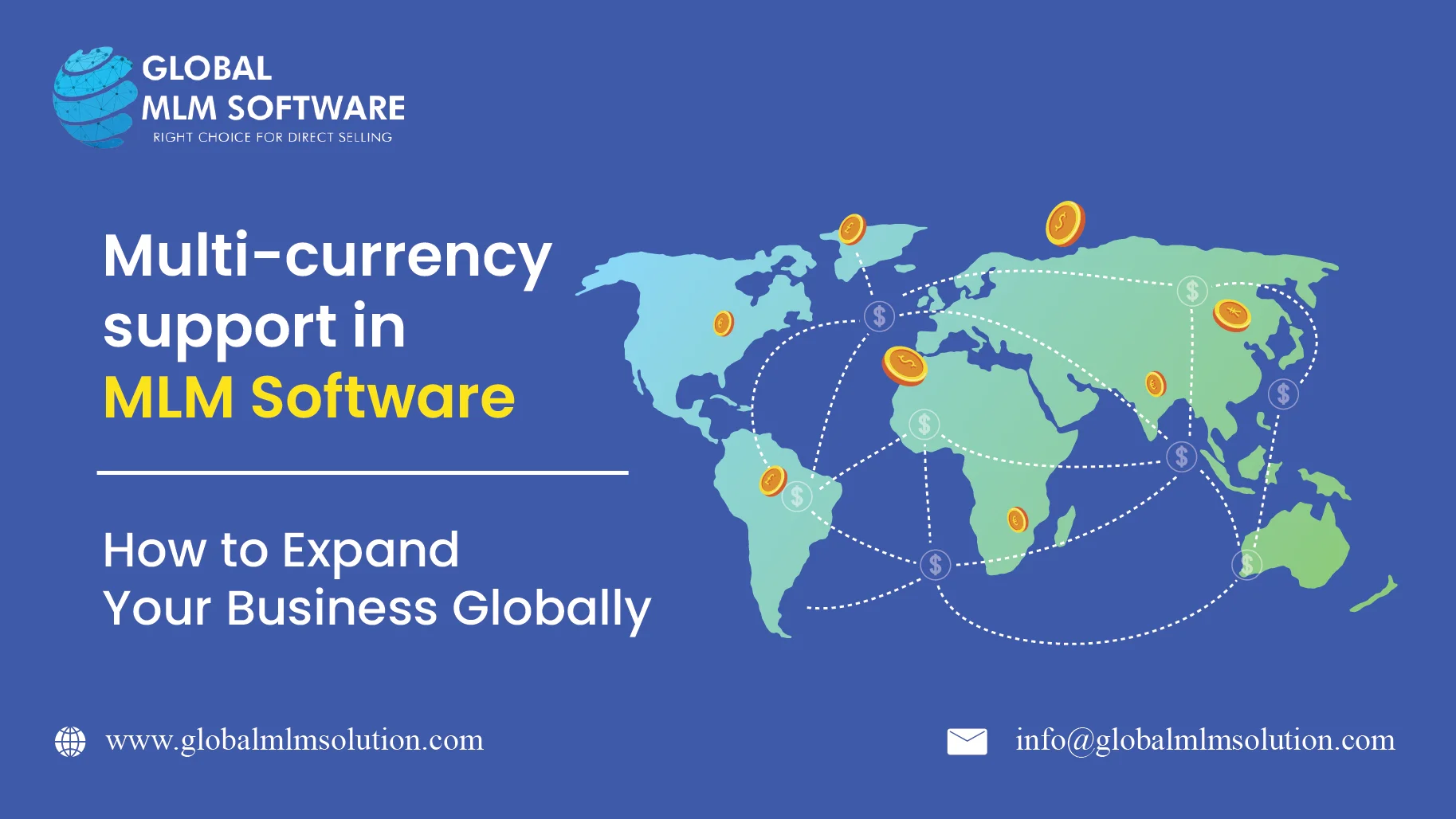One of the biggest challenges that MLM businesses face is long-term distributor retention. MLM businesses often experience frustration that even after paying generous commissions, huge bonuses, and regular rewards, they are unable to retain their distributors.
However, there’s a hidden factor that demotivates distributors. Are you sure your distributors are getting paid fairly? You must be thinking, “Yes, they do get the expected payment.” But the reality is different. According to a study by the AARP Foundation, 36 percent of distributors leave MLM businesses because they don’t make the expected money.
When some of the distributors’ downline members become inactive, their payments get reduced, even after the hard work. That’s where MLM software compression comes into the picture as a robust tactic designed for fair payouts and distributor growth.
This Article Contains:
What is MLM Compression?
You can think of compression as a set of payout-time rules applied by your MLM system to ensure fair commissions to everyone, even when some of the downline members become inactive.
Here, when a person is not qualified for the commission in a genealogy tree, their place is taken by the next qualified person in the downline. According to that, the upline’s payout is decided.
However, it doesn’t change the sponsorship or placement records; it only changes who to count for making the depth-based commission as per the compression rules you set.
Let’s take a closer look with a straightforward example.
The MLM business follows a unilevel MLM plan where the qualification requirement is 100 PV. The depth-based commission is as follows:
L1 → 10%
L2 → 5%
L3 → 3%
The downline is as follows:
Sam is the sponsor, where L1, L2, and L3 are Kat, Robin, and Joseph, respectively.
Kat, Robin, and Joseph earned 90 PV, 120 PV, and 160 PV, respectively. We can note that Kat doesn’t qualify for the commission (90 PV is less than 100 PV, which is necessary for commission payment). Therefore, Kat will be considered not qualified.
Sam’s earnings without MLM compression:
(L1 PV X 10%) + (L2 PV X 5%) + (L3 PV X 3%)
(0 X 10%) + (120 X 5%) + (160 X 3%) [L1 PV is considered 0 and Kat is not qualified]
0 + 6 + 4.8 = 10.8
Sam’s earnings with MLM compression applied:
The same formula applied: (L1 PV X 10%) + (L2 PV X 5%) + (L3 PV X 3%)
However, when L1 is not qualified, L2 will move to L1’s place, and L3 will move to L2’s place, and so on, but only in the context of payment. The ranking, sponsorship, and position remain the same. So, if the L1 becomes active again, the payout becomes the same as before.
Now, by applying the compression rules:
(120 X 10%) + (160 X 5%) = 20 PV
How Does MLM Compression Impact Your Network?
MLM Software Compression impacts your MLM network in several positive ways. It defines how the payout flows through your genealogy during each pay run. It’s like hitting two targets with one stone, where you remove the inactive spots and reward builders fairly at the same time. Let’s check its impact on your network in detail:
Earning fairness and predictability: It ensures that the earnings of the team builders don’t decrease due to the inactivity of members in their downline.
Depth control: It keeps depth-based commissions in line with the designed limits, even where there are gaps due to inactive users.
Behavioral signals: When MLM compression rules are in place, distributors try their best to qualify for commission and avoid getting skipped, helping MLM businesses to maximize the number of active distributors.
Compliance and transparency: When compressions are logged properly, it increases trust in payouts and decreases payout disputes, allowing the business to gain distributor trust, translating to a reputable, compliant organization.
Types of MLM Compression
Compression is the tactic that supports your compensation engine in keeping payouts aligned with your qualified activity. However, there’s not a single MLM compression plan that works for all MLM businesses. The compression you choose depends on your compensation plan design, risk appetite, and operational maturity.
You also need to choose how aggressively you wish to skip a non-qualified position, whether you want to provide a grace period to distributors, and what your return policy is. So, let’s go through each type and we’ll tell you which one suits your business the best.
Forced MLM Compression
Forced MLM compression is the type of compression that automatically skips or removes inactive or non-qualified distributors from the payout structure and “pulls up” the next qualified ones to maintain payout levels. It ensures that commissions are fairly distributed to active participants, preventing lost earnings due to inactive downlines while keeping the overall genealogy unchanged.
For instance, if the PV is below the minimum, KYC requirements are not completed, or auto-ship customers drop off, the person may not be considered qualified for the payout. The payout qualification completely depends on your compensation plan.
So, it pulls the next qualified distributor up to fill the place of the non-qualified distributor, and depth calculation is considered accordingly. In forced MLM compression, there are no exceptions, and gaps are always filled.
When to use
Where leadership expects the downline to make efforts and qualify for the commission, as their earning depends on it.
When your compensation plan wants to keep the payout predictable and maximize it for your builders.
When you want to promote activeness, eliminate the dead spots, and showcase earning potential.
Things to do before deployment
Pre-run simulation: Compare the payout before and after compression for multiple scenarios to ensure forced MLM compression doesn’t cost the MLM business.
Explainability: Create code for various conditions implemented for skipping distributors.
Immutable Genealogy: Ensure that it doesn’t alter the historical placement, i.e., if the distributor becomes active again, ensure that it stays at the level where it was before.
Automatic MLM Compression
Automatic MLM Compression is a payout optimization process in which inactive or non-qualified distributors are automatically skipped during commission distribution. As the name suggests, the automatic MLM compression applies compression automatically at the time of payout according to the parameterized rules.
There’s one major difference that makes automatic MLM compression completely different from forced.
In forced MLM compression, no gaps are skipped. However, in automatic MLM compression, skipping gaps is allowed under certain conditions. For instance:
You provide a grace period to inactive members or allow a limited number of months for which they can be inactive, and depth commission for the upline will still be considered based on their earnings during inactive time. If there’s no earning, it will be considered zero commission.
Sometimes, autoship lags occur, which causes customers' payments to be pushed after the scheduled payout. In such cases, the compression doesn’t happen. Either the payout is initiated based on the existing earnings, or the predetermined auto-ship payments are considered as part of the depth-based commission.
If the person doesn’t qualify due to failed payments.
When to use Automatic MLM Compression
When there are numerous distributors and nuance is common, and thus, it needs to be taken into account.
When there are blended plans, such as unilevel combined with binary, which have different compression logics in different components.
Things to do before deployment
Unit Test for Rules: Run tests with sample distributor data based on your automatic compression rules to predict the exact outcomes. Whenever there’s a change in rules, a continuous integration job should automatically run a test suite.
Cost Monitors: Alert if the payout after compression exceeds commission threshold limits.
Change Governance: Implement a system that requires a dual approach for editing the rules. Maintain immutable change logs that can be traced back to the editor.
Manual MLM Compression
Manual MLM compression is a process where inactive or non-qualified distributors are manually skipped or adjusted within the genealogy structure during payout. It is triggered by compensation admins selectively for a particular region, leg, or even an individual level. Manual MLM compression is considered an exception-handling toolkit.
When to use Manual MLM Compression
Incidents: When there are specific issues experienced by individuals, particular legs, or region-specific individuals, due to which the sales amount is not reflected against distributors.
Retro corrections: When there are misapplied holds, KYC-related delays, or misclassification of stock keeping unit.
Legal/compliance directives: Temporarily excluding specific distributors due to legal or compliance issues, while maintaining fair payment to others.
Things to do before deployment
Strict Audit Trail: Since manual MLM compression is triggered by compensation administrators, strict, immutable audit trails must be maintained from a compliance perspective. It also helps to trace back to the person accountable for the action.
Dual Control: It’s also advisable to implement a dual approval system wherever manual MLM compression is used to ensure accuracy and prevent exploitation.
Auto-reconcile: After the compression is applied, the system should automatically generate variance reports and reissue the original flow.
MLM Software Compression: What it Is?
MLM software compression is a feature within MLM software that ensures fair and accurate commission distribution by skipping inactive or non-qualified distributors and moving the next active members up for payout purposes. The MLM software ensures the downline structure remains intact while making sure only qualified participants earn commissions, improving accuracy, motivation, and fairness within the MLM compensation process.
The MLM software automatically reviews the distributor hierarchy during each commission cycle. When it detects members who are inactive or have not met qualification criteria (such as minimum sales volume or active status), it temporarily skips them for that payout run. The system then “compresses” the levels by moving the next qualified distributors upward, so the commission flow remains continuous and fair.
Advanced MLM software allows admins to set rules for forced or automatic compression, define qualification thresholds, and generate transparent reports for every adjustment made.
MLM Software Compression in Different Plan Types
Compression never rewrites your genealogy tree; it only defines how payout can be made fairly to qualified distributors. However, it works differently for various compensation plans, and we’ll show you how.
MLM Software Compression in Unilevel Plan
In a unilevel MLM plan, compression is quite straightforward. When a downline member is not qualified for the payout, they are skipped, and the next qualified person is pulled up, so the level stays filled and payment is made accordingly.
However, in certain cases, the cost may rise if you allow “infinite fill.” Also, ensure that the scope of the unilevel is only to commission and not rank advancement, qualification or pool eligibility.
MLM Software Compression in Binary Plan
When it comes to the binary MLM plan, you must ensure that MLM compression doesn't interfere with the core left/right pairing compensation engine. Unlike the MLM compression in the unilevel plan, no distributor is pulled up in the case of binary. The volumes stay anchored to their legs. The cycles and carryover follow the standard rules.
MLM software compression usually enters in a binary plan when there’s an overlay component, such as matching bonuses or leadership bonuses. When a personally enrolled distributor is inactive, the MLM software can skip that person for the overlay payout. Instead, include the nearest qualified participant.
Note that only apply compression after finalizing weekly cycles and return/chargeback windows.
MLM Software Compression in Matrix Plan
MLM software compression in the matrix MLM plan works the same as it does for the unilevel plan. The only difference is that the matrix plan has a stricter depth cap. For instance, if the matrix has a depth of three levels, and one of the distributors is not qualified, there won’t be any other distributor to pull up to contribute a depth-based bonus in its place.
In such cases, many MLM businesses allow pulling of anyone from the lower level, provided that it’s part of the sponsor’s matrix and qualified.
Choosing MLM Software with Compression Features
There are many MLM software solutions in the market, but if you are choosing for MLM compression, make sure that the following features are available:
Ability to define unqualified distributors unambiguously: The MLM software compression feature should have the ability to create specific codes for different reasons for distributors being non-qualified. It should be able to detect the non-qualification automatically and implement forced or automatic compression. If you go forward with manual compression, it should send the alert to the compensation admins of the distributor being non-qualified, along with the reason code.
Security and governance: The access to check or implement MLM compression should be governed by role-based access control. A multi-level or dual-level approval system should be in place to have an additional layer of checks. All these activities must be recorded under tamper-evident logs.
Ability to run simulations to test the extremes: Many MLM compression softwares allow testing the compression in general conditions, but crash when extreme scenarios are encountered. So, the tool must be able to predict changes in distributor earnings and the MLM business’s profit during seasonal spikes, flash promotions, gateway outages, bulk returns, etc. All these scenarios should be tested for forced, automatic, and manual (all types of compressions) to avoid the requirement of switching to another tool when you change your compression rules.
Implementation of cost guardrail: You must be able to configure cost caps and bonus ceilings and define company-wide compression “fill-depth” limits.
Audit-Ready Report Generation: The software should be able to generate audit-ready reports containing all the compression instances, the respective reasons for skipping distributors, and payout variance information.
Future Trends in MLM Compression
The classic MLM compression is evolving from a monthly task to a governed, observable, and near-real-time subsystem. The latest MLM software compression decides eligibility by taking orders, returns, KYC verification, and compliance into consideration. Once the eligibility is decided, it applies compression through versioned, tested policies. Below, we have added some of the detailed trajectories shaping the next-generation MLM compression implementation.
Real-Time Micro Compression
Rather than going through every event (such as KYC clears, returns, and total PV calculation) at the end of the payout cycle, update the eligibility as and when the event occurs. This keeps the record clean and avoids duplicate event entries. Besides that, the MLM compression is calculated right away after the event, ensuring that nothing gets missed out on in the end that could change the eligibility status.
Policy As Code
Rather than putting compression rules in a spreadsheet, place them in the MLM software compression. Store them in an application, review them like code, and catch errors by running automatic checks. Write small tests for tricky cases (grace periods, partial PV, failed payments, KYC holds) so you always know the outcome won’t change by accident.
It’s necessary to time-stamp each rule version, as it allows for re-running old pay cycles exactly as they were. Moreover, tagging each payout with a version-based unique policy ID allows auditors to trace which logic is used for every payout.
AI-Assisted Unusual Pattern Detection
Artificial intelligence learns what normal payout patterns look like and how the MLM software compression usually occurs. When there’s a deviation from the normal, AI alerts the compensation admins, who can then dig deeper and understand whether the anomaly is just a coincidence or an exploitation of the system.
For instance, one level becomes completely inactive and gets skipped to benefit the upline more. Or, if there’s a sudden spike in payout variance, it’s a red flag too.
The system can then pause that branch for review, apply stricter local rules for this run, or require a second approval before payments go out.
Detailed, Automated Explainability
One of the major benefits compression provides to MLM businesses, apart from distributor retention, is compliance. When your distributors are paid fairly, fewer disputes are raised, and trust stays intact.
However, it’s still important that MLM software compression is presented with explainability. Every pay decision should come with a receipt. For each distributor, whether counted or skipped, the system should show the input used:
Orders
PV
Payment
KYC details
Grace period
It should allow tagging the policy version used, the real-time person’s eligibility status, and the reason if he is skipped.
The MLM software compression should allow exporting detailed records containing all the above-mentioned information, which can be used by auditors for compliance checks.
Self-Service Simulation for Distributors
The Self-service simulation feature isn’t in practice yet, but can be a powerful tool for distributors to predict their earnings and maximize it by keeping distributors active. The MLM compression simulation tool lets distributors identify the result for an infinite number of scenarios where particular distributors become inactive or don’t qualify for commission.
Based on the results, they can calculate whether there will be any losses and take necessary actions accordingly.
Key Takeaways
We learned why MLM compression is essential and how MLM software can help you achieve it. We also checked its types, and you can select one depending on your MLM business policies.
This takes you to the next step that you must take. Define compression rules for your business, find the software that can help implement these rules, run simulations for different scenarios, and launch MLM software compression when it looks perfect.
It will still keep on checking the payout variance, loopholes, and room for vulnerabilities to improve the MLM compression system each day.
FAQs
1. Why is MLM Software compression important for network marketing companies?
MLM software compression is important for network marketing companies as it allows them to skip the inactive distributors and fairly pay the team builders and sponsors.
2. What data points does the MLM software check before applying compression?
Below are the data points that MLM software needs to check before applying compression:
Personal volume, team volume
Rank and paid-through status
Qualified legs
Autoship status
Payment status
Returns and chargebacks
KYC/AML compliance holds
Grace-period usage
Depth caps
3. Does MLM Software compression affect distributor genealogy reports or only payouts?
No, MLM software compression doesn’t change genealogy reports. It only changes the payouts based on the compression rules. The hierarchy and downline never change.
4. Is it possible to customize MLM Software compression rules to match unique compensation plans?
Yes, it’s not only possible but required to customize MLM software compression to match unique compensation plans, as no single set of compression rules works for all compensation plans.
5. Is it possible to customize MLM Software compression rules to match unique compensation plans?
Companies first need to check whether the application has “must-have” compression rules or not, such as support for different compensation plans, generating unique codes against compression reasons, and support for running different compression types. On top of these features, near-real-time updation, audit trail creation, and red flag alert system make compression effective.
Disclaimer: Global MLM Software do not endorse any companies or products mentioned in this article. The content is derived from publicly available resources and does not favor any specific organizations, individuals or products.






